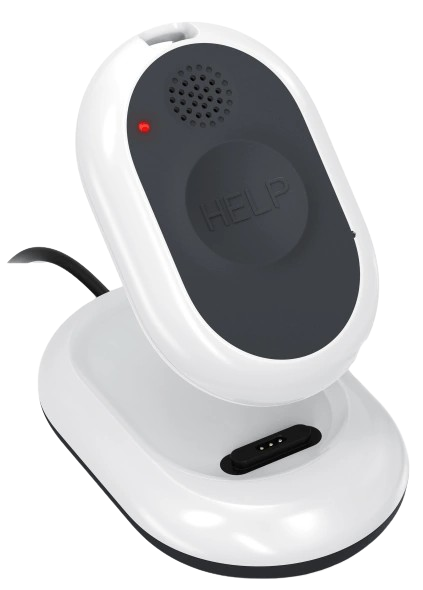In Kansas, many employees work alone in industries like agriculture, energy, healthcare, security, and maintenance. These lone workers operate without immediate support or supervision, making them more vulnerable to emergencies and occupational hazards. Employers must recognize these risks and take appropriate steps to protect workers in isolated situations.
While Kansas does not operate a state-run OSHA program, employers are subject to federal OSHA regulations. In addition, the Kansas Department of Labor’s Industrial Safety and Health Division (ISH) provides education, outreach, and consultation services that help public agencies and smaller businesses comply with safety best practices, including those relevant to lone workers.
On This Page
Our Guide To Lone Worker Safety Policy And Legislation In Kansas
Kansas falls under federal OSHA jurisdiction, meaning workplace safety enforcement is managed directly by the U.S. Occupational Safety and Health Administration. There is no standalone regulation for lone workers; however, OSHA’s General Duty Clause obligates employers to provide a safe workplace free from recognized hazards—including those related to working alone.
The Industrial Safety and Health Division (ISH) of the Kansas Department of Labor offers voluntary safety consultation services, particularly useful for public sector employers and small private businesses. While ISH does not have enforcement authority, it can help organizations identify safety risks and improve internal protocols—making it a valuable resource when developing lone worker policies.
How Kansas Defines A Lone Worker
Kansas does not provide a specific statutory definition of “lone worker,” but the term generally refers to any employee who works without direct supervision and without colleagues nearby who can assist in case of emergency.
Common lone worker roles in Kansas include:
- Utility technicians operating in rural areas
- Agricultural workers in fields or grain elevators
- Home healthcare providers visiting patients
- Janitors and custodians working after hours
- Security personnel during solo shifts
- Delivery drivers and field service workers
These workers face increased risks due to isolation, delayed emergency response, and limited oversight.
Employing A Lone Worker In Kansas
Employers in Kansas are legally and ethically responsible for protecting lone workers under OSHA’s general safety requirements. Because there is no single rule that governs lone work, employers must implement a combination of hazard identification, procedural safeguards, and ongoing monitoring.
Best practices for employing lone workers include:
- Conducting Risk Assessments: Evaluate job tasks and environments for hazards specific to working alone.
- Establishing Communication Protocols: Use check-ins, mobile apps, or two-way radios to maintain regular contact.
- Training and Preparedness: Ensure lone workers are trained to handle emergencies and understand safety procedures.
- Technology Integration: Equip workers with GPS-enabled devices, panic buttons, or automated alert systems.
- Internal Policy Development: Create written guidelines that define when and how lone work is permitted, along with escalation procedures.
Consulting with ISH through the Kansas Department of Labor can further strengthen safety strategies, especially for public sector employers.
Learn How You Can Protect Your Employees With Loneworker.com

With Loneworker.com you can be equipped with the knowledge and the means to protect your employees and protect your business. Contact us today to learn more about how Loneworker.com can protect you and your employees.
How The Safe Lone Worker App Can Protect Kansas Lone Workers And Employers
The Safe Lone Worker app offers an efficient way to monitor the well-being of remote or unsupervised employees. With features like automated check-ins, GPS tracking, fall detection, and panic alerts, the app helps ensure that lone workers are never truly alone—no matter where in Kansas they are located.
This type of technology can play a key role in reducing incident response times, supporting OSHA compliance, and demonstrating an employer’s commitment to workplace safety.
Kansas Lone Worker Policies
Kansas operates under federal OSHA authority, meaning there is no state-specific OSHA plan or regulation that addresses lone workers directly. However, employers remain responsible for protecting isolated workers under the General Duty Clause of the Occupational Safety and Health Act.
The Kansas Department of Labor’s Industrial Safety and Health Division (ISH) serves as an additional resource for employers—particularly those in the public sector or smaller organizations—by offering consultation, hazard analysis, and safety education. While not regulatory, these services can help employers develop better lone worker protocols and identify workplace risks.
Employers are encouraged to assess lone working situations carefully, implement communication and monitoring strategies, and review available OSHA resources. For accurate, current information, consult OSHA.gov and the Kansas Department of Labor.
This guide is for general reference only and should not be considered legal advice or a replacement for official regulatory guidance.
Kansas Lone Worker Resources
OHS Contact Centre
- 1-866-415-8690
CDC / NIOSH
- 800-232-4636

Affordable Monitoring For Lone Workers In Kansas

-
 Monitoring Your Employees' Safety
Monitoring Your Employees' Safety
-
 GPS Tracking And Monitoring
GPS Tracking And Monitoring
-
 Man Down Panic Alerts
Man Down Panic Alerts
-
 24/7 Protection Anywhere
24/7 Protection Anywhere
Lone Worker Legislation
Lone Worker Safety Policies And Legislation By State
-
 Alabama State Safety Policies And Legislation
Alabama State Safety Policies And Legislation
-
 Alaska State Safety Policies And Legislation
Alaska State Safety Policies And Legislation
-
 Arizona State Safety Policies And Legislation
Arizona State Safety Policies And Legislation
-
 Arkansas State Safety Policies And Legislation
Arkansas State Safety Policies And Legislation
-
 California State Safety Policies And Legislation
California State Safety Policies And Legislation
-
 Colorado State Safety Policies And Legislation
Colorado State Safety Policies And Legislation
-
 Connecticut State Safety Policies And Legislation
Connecticut State Safety Policies And Legislation
-
 Delaware State Safety Policies And Legislation
Delaware State Safety Policies And Legislation
-
 Florida State Safety Policies And Legislation
Florida State Safety Policies And Legislation
-
 Georgia State Safety Policies And Legislation
Georgia State Safety Policies And Legislation
-
 Hawaii State Safety Policies And Legislation
Hawaii State Safety Policies And Legislation
-
 Idaho State Safety Policies And Legislation
Idaho State Safety Policies And Legislation
-
 Illinois State Safety Policies And Legislation
Illinois State Safety Policies And Legislation
-
 Indiana State Safety Policies And Legislation
Indiana State Safety Policies And Legislation
-
 Iowa State Safety Policies And Legislation
Iowa State Safety Policies And Legislation
-
 Kansas State Safety Policies And Legislation
Kansas State Safety Policies And Legislation
-
 Kentucky State Safety Policies And Legislation
Kentucky State Safety Policies And Legislation
-
 Louisiana State Safety Policies And Legislation
Louisiana State Safety Policies And Legislation
-
 Maine State Safety Policies And Legislation
Maine State Safety Policies And Legislation
-
 Maryland State Safety Policies And Legislation
Maryland State Safety Policies And Legislation
-
 Massachusetts State Safety Policies And Legislation
Massachusetts State Safety Policies And Legislation
-
 Michigan State Safety Policies And Legislation
Michigan State Safety Policies And Legislation
-
 Minnesota State Safety Policies And Legislation
Minnesota State Safety Policies And Legislation







